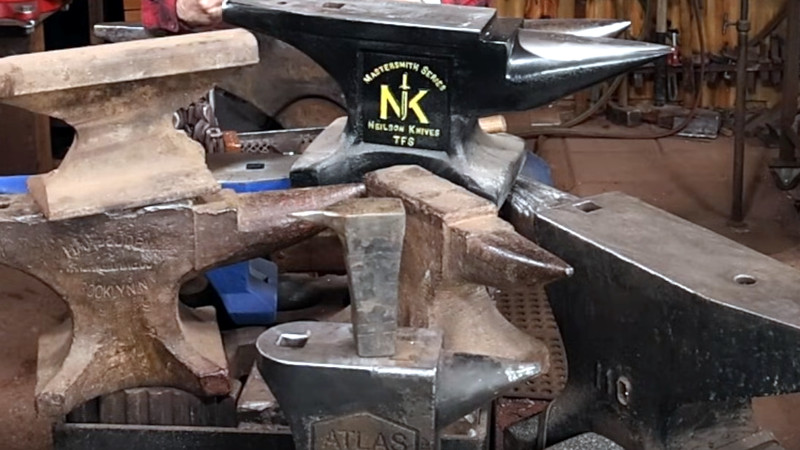No doubt many readers have at times wished to try their hand at blacksmithing, but it’s fair to say that acquiring an anvil represents quite the hurdle. For anyone not knowing where to turn there’s a video from [Black Bear Forge], in which he takes us through a range of budget options.
He starts with a sledgehammer, the simplest anvil of all, which we would agree makes a very accessible means to do simple forge work. He shows us a rail anvil and a couple of broken old anvils, before spending some time on a cheap Vevor anvil and going on to some much nicer more professional ones. It’s probably the Vevor which is the most interesting of the ones on show though, not because it is particularly good but because it’s a chance to see up close one of these very cheap anvils.
Are they worth taking the chance? The one he’s got has plenty of rough parts and casting flaws, an oddly-sited pritchel and a hardy hole that’s too small. These anvils are sometimes referred to as “Anvil shaped objects”, and while this one could make a reasonable starter it’s not difficult to see why it might not be the best purchase. It’s a subject we have touched on before in our blacksmithing series, so we’re particularly interested to see his take on it.
















Another one who knows all about Anvils is Wile E. Coyote.
Yeah, I thought anvils just fell on your head like the cartoons, I didn’t know you actually had to buy one!
30 kg VEVOR “anvil” is $250.
30 kg PERUN anvil is $800.
Either PERUN is a premium brand or VEVOR is an anvil-shaped object likely made of sumtingwrongium.
The vevor anvils are cast steel with really poor quality control. In the video John even shows where it looks like they filled in flaws, and the hardness of the face varies a lot. The Perun anvil is forged steel and being from Poland likely has much better quality control.
Just go to your nearest light rail and harvest yourself an anvil off the end of a spur.
Top is usually pretty hard, hacksaw isn’t going to do the job.
I recommend a shaped charge.
Shaped charge costs more than an anvil. I asked a friend who worked on railway restoration to grab me a length next time the opportunity arose. Took a few months, but he came through.
Having friends is even more expensive than buying a shaped charge, and those are pretty easy to come by (explosives, not friends) if you’re living in Slovakia and know the right Telegram channels.
a) get thee to craigslist
b) find the oldest anvil you can find. maybe $1 a pound (freedom units) is about right. don’t worry about this too much like this guy is going on about.
c) get a couple of friends, one must own a pickup
d) put in location
e) sort it out with significant other later. unless he/she also has a couple of friends, with a pickup, there isn’t a lot or recourse.
Regarding anvils, Dan Gelbart reduced rebound and noise from an anvil by gluing sheets of lead to the sides. One surely has to take care while working with lead though.
Elemental lead would be pretty low down on your list of hazards in a typical smithy.
As long as you don’t accidentally burn it with a torch.
Shouldn’t be an issue: you should be wearing appropriate footwear and long pants anyway, so the molten lead won’t harm you.
The most astonishing hack I have seen for reducing anvil ring is strong magnets on a unobtrusive sides of the anvil.
How are anvils produced? Are the ASO versions just inferior steel?
For that matter, what is a bad anvil? I’m no blacksmith but doesn’t it pretty much need to be heavy and… what else? Correct harness or something? Thanks in advance
Two holes for holding tooling and doing punching, hard enough to not mushroom, soft enough to not chip, a decently sharp edge along the back for forming over, consistent hardness, a few other options if you’re doing something specialist like making/fitting/modifying horseshoes, massive enough to act like a more or less immovable object.